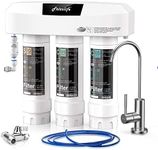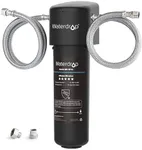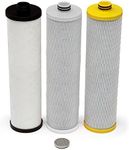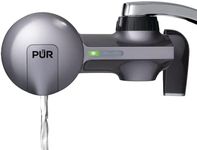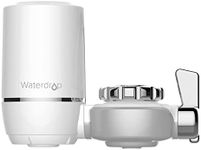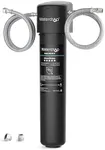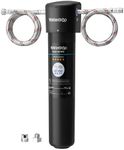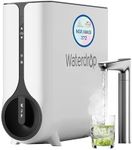Buying Guide for the Best Faucet Water Filters
Choosing the right faucet water filter can make a big difference in the quality and taste of your tap water. The main goal is to find a filter that effectively removes contaminants while fitting your faucet and meeting your household's needs. It's important to consider what you want to filter out, how much water you use, and how easy the filter is to maintain. By understanding the key features, you can make a confident choice that ensures clean, safe water for you and your family.Filtration TechnologyFiltration technology refers to the method the filter uses to remove impurities from your tap water. Common types include activated carbon, ceramic, and multi-stage filters. Activated carbon is great for removing chlorine, odors, and some chemicals, while ceramic filters can block bacteria and sediment. Multi-stage filters combine several methods for broader protection. If your main concern is taste and odor, activated carbon may be enough. For more comprehensive filtration, especially if you’re worried about bacteria or heavy metals, look for multi-stage or ceramic options.
Contaminants RemovedThis spec tells you which impurities the filter is certified to remove, such as chlorine, lead, pesticides, or bacteria. Some filters only improve taste and odor, while others target specific health risks. Check what’s in your local water supply (you can often find this information online) and choose a filter that addresses those concerns. If you’re mainly worried about taste, a basic filter will do. If you have older pipes or live in an area with known contamination, look for filters that remove heavy metals or microbes.
Filter LifespanFilter lifespan indicates how long the filter will last before it needs to be replaced, usually measured in gallons or months. Shorter lifespans mean more frequent changes, while longer ones are more convenient. If you have a large household or use a lot of filtered water, a longer lifespan will save you time and effort. For smaller households or occasional use, a shorter lifespan may be sufficient.
Flow RateFlow rate measures how quickly water passes through the filter, usually in gallons per minute. A higher flow rate means you get filtered water faster, but sometimes at the expense of thorough filtration. If you want quick access to filtered water for cooking and drinking, look for a higher flow rate. If you’re more concerned about maximum filtration, a slower flow rate may be acceptable.
Installation and CompatibilityThis refers to how easily the filter attaches to your faucet and whether it fits your specific faucet type. Some filters are designed for standard faucets, while others may not fit pull-out or spray-style faucets. Check your faucet’s design before buying and look for filters that are easy to install and remove. If you rent or move often, a tool-free, universal fit is a good choice.
Maintenance and Replacement IndicatorsSome filters have indicators that tell you when it’s time to replace the cartridge, such as a light or a timer. This helps ensure you always have effective filtration. If you’re forgetful or have a busy schedule, a filter with a clear replacement indicator can be very helpful. If you prefer to track things yourself, a basic model without indicators may be fine.

